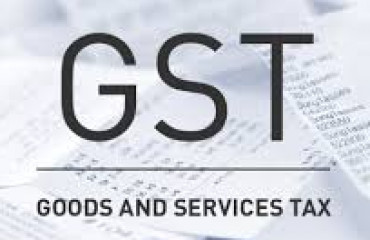
At the time of its introduction in 2017, policymakers across the world wondered how a Goods and Services Tax (GST) would fare in a complex federal economy like India’s. While the success of federal democracy was applauded when it was launched, less noticed was an institution that was created by a Constitutional amendment and has become a symbol of Union-state relations at their best. By setting up the GST Council, India not only strengthened its federal structure, which has evolved since independence, it instituted a mechanism by which state government of varied political allegiances could come together, take and abide by joint decisions for the nation’s common good.
At the time of its introduction in 2017, policymakers across the world wondered how a Goods and Services Tax (GST) would fare in a complex federal economy like India's. While the success of federal democracy was applauded when it was launched, less noticed was an institution that was created by a Constitutional amendment and has become a symbol of Union-state relations at their best. By setting up the GST Council, India not only strengthened its federal structure, which has evolved since independence, it instituted a mechanism by which state government of varied political allegiances could come together, take and abide by joint decisions for the nation's common good. The Council also reassures us that the principles of game theory have worked. Regardless of divergent political interests, the current equilibrium has maximum pay-offs for all players.
While the GST Council has been a symbol of cooperative federalism, a recent Supreme Court ruling in the case of Mohit Minerals re-ignited a debate on the legal sanctity of decisions taken by the council. The judgement put an end to long-drawn litigation over reverse charge applicability on ocean freight for an importer in the case of CIF (cost, insurance plus freight) imports. The issue involved in this case was whether IGST (Interstate GST) under the reverse charge mechanism can be imposed on an Indian importer with a CIF contract where the foreign supplier procures the services of a foreign shipping line for shipping goods to India. The Supreme Court held that since the Indian importer is liable to pay IGST on the "composite supply", comprising the supply of goods and services of transportation, insurance, etc, by way of a CIF contract, a separate levy on the Indian importer for the "supply of services" by the shipping line would violate Section 8 of the CGST Act.
While the recent ruling provides relief to Indian industry, especially to importers supplying goods and services that are not taxable under GST, the apex court's observation that recommendations of the GST Council are not binding on the Centre and states gave rise to an anxious debate on the powers of the council and the space available to the Centre and states to go beyond its recommendations.
The GST Council has powers under Article 279A of the Indian Constitution by which it can make recommendations on "any other matter" related to GST. The council has to arrive at its recommendations through harmonized deliberation between the Centre and states. A recommendation made under Article 279A is non-qualified; that is, there is no explanation of the value of such a recommendation. The use of the phrase "recommendations to the Union or States" indicates that the GST Council is a recommendatory body aiding the government in the enactment of legislation on GST.
Since its very inception, the GST Council has worked on the principles of cooperative federalism, and all its decisions so far have been by near consensus. It is not as if the Centre and states do not have the power to make laws or prescribe GST rates under Article 246A. Yet, they have chosen to cooperate for a uniform system of taxation throughout the country.
Looking at it from the principles of Game Theory, and specifically the Nash equilibrium under which no player can gain by acting unilaterally, both the Centre and states maximize their payouts if they continue to abide by GST Council decisions. However, the assumption in this theory is that all actors are rational and pay-outs are a function of the net benefits accruing to the economy of the state or Centre under the current set of GST strategies. A rogue actor with its own perceptions of pay-outs that are not in line with economic rationality could disturb the prevailing equilibrium, leading to a non-optimal GST situation where multiple states have multiple rates and versions of the tax, like we had under the pre-GST regime.
Every member of the GST Council has a dominant strategy that depends on its utility function and may or may not be its strategy at equilibrium. A state's dominant strategy, for example, can be one that reclaims its autonomy to levy taxes by taxing some items at a rate higher than the prevailing all-India rate to maximize its own revenues. Yet, an equilibrium strategy would be to cooperate with other states and the Centre for a single market and rate uniformity to maximize the pay-outs for all players in the game. Accordingly, both states and the Centre gain by working in unison rather than unilaterally.
As GST in India completes its fifth year and revenues begin to move northwards to reach optimal levels, it's a good time to take stock of what has been achieved and what further safeguards need to be built into the system so that a rogue player does not hold the country and its economy to ransom. While enough deterrents exist in the country's other federal systems, a healthy debate will ensure that all actors in this game continue to act cooperatively so that the GST regime thrives and achieves its true potential, maximizing everyone's pay-outs.
